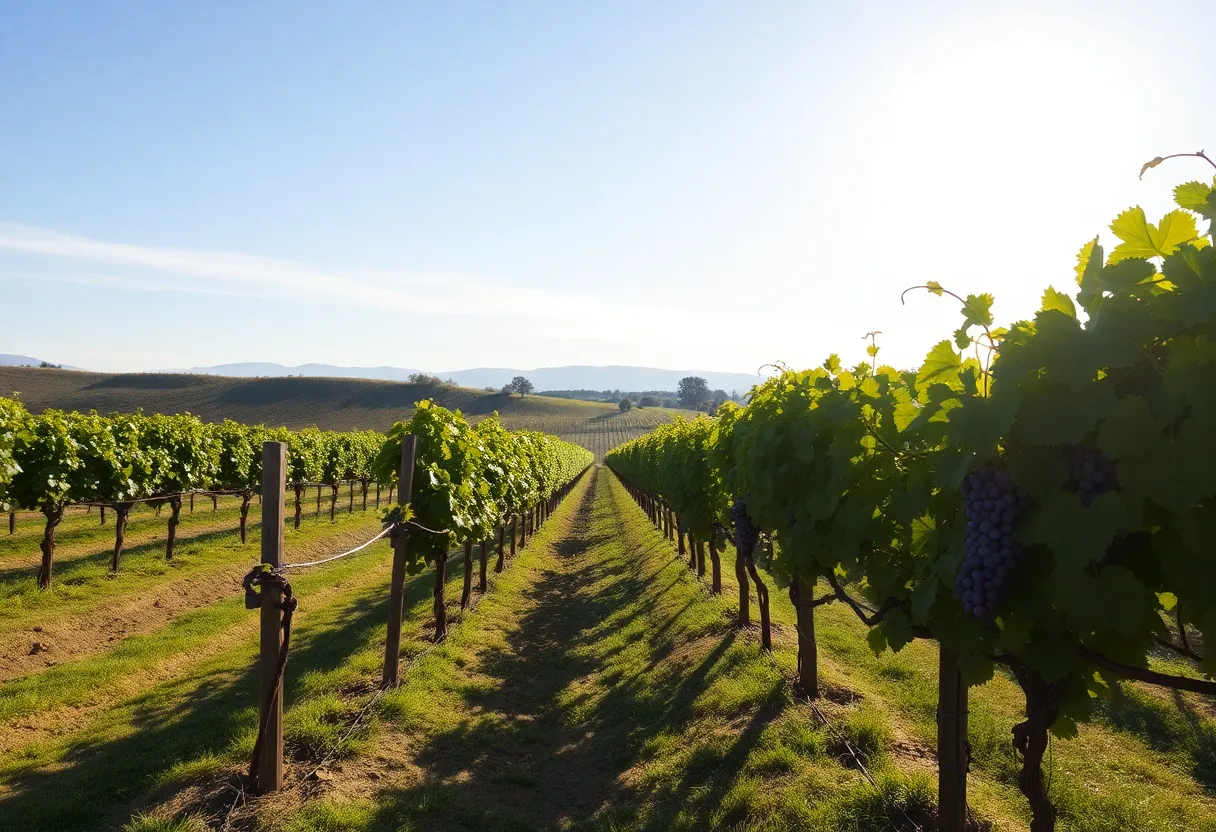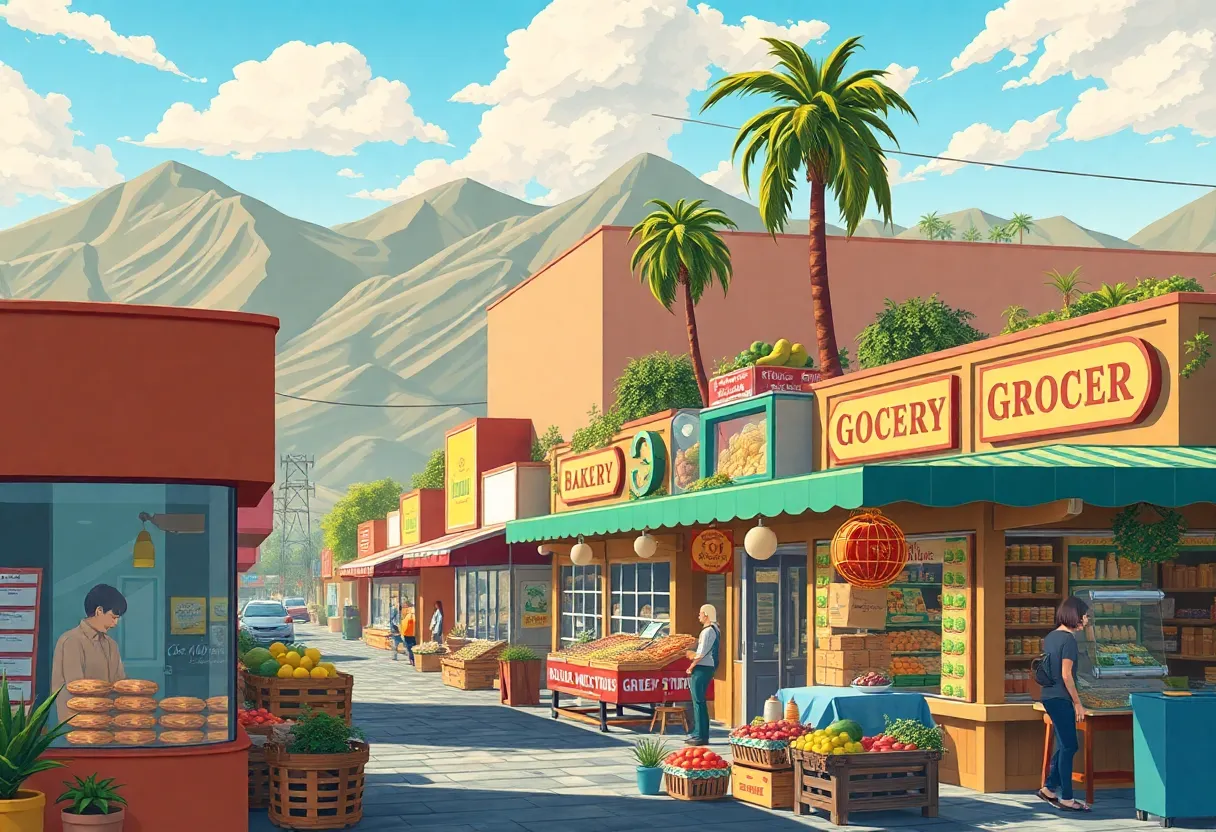News Summary
California’s small winemakers are cautiously optimistic as new tariffs introduced by President Trump could provide them with opportunities for growth amid a declining domestic wine market. With a blanket 10% tax on all imported goods, and a 20% tariff on imports from major wine-producing countries, local producers may benefit from reduced foreign competition. Despite challenges like rising production costs and shifting consumer preferences, these winemakers are adapting to turn potential adversity into a better market position and greater local sales.
Small California Winemakers Eye Bright Opportunities Despite Tariffs
In the sunny vineyards of California, winemakers are cautiously optimistic as ongoing tariffs introduced by President Donald Trump create a possible opening for growth. Despite the broader decline in alcohol consumption across the United States, these small producers believe there may be a light at the end of the tunnel.
A Declining Market for Wine
Over the last few years, the wine industry in the U.S. has faced significant challenges. As more consumers drift away from wine, the industry’s oversupply situation has left many producers in a tricky spot. With global imports on the rise, it seems that U.S. wine producers have been grappling with increased competition from abroad. However, the proposed tariffs might just tip the scales in their favor.
What the Tariffs Mean for Local Vintners
Trump’s tariffs place a blanket 10% tax on all imported goods along with a steeper 20% on major wine-producing countries like Italy and France. This could represent a potential windfall for California winemakers. With less foreign wine on the shelves, smaller wineries might see a spike in local sales. Some industry insiders suggest that these tariffs could level the playing field for domestic vintners, providing them a fighting chance against their overseas counterparts.
Shifting Consumer Preferences
For mid-range California varietals, this could be a golden opportunity. With travelers less likely to head abroad due to economic worries, more tourists could find themselves enjoying the local wine scene instead of hopping on a plane to Europe. Enthusiasts are likely to seek experiences at Napa Valley or scenic Santa Barbara County, where about 81% of U.S. wine is produced. It’s a chance for smaller vineyards to shine against the backdrop of beautiful landscapes and inviting tasting rooms.
Competition and Challenges Ahead
While the potential benefits of tariffs may excite many, not everyone in the industry feels confident. Ultra-premium wine producers, which often focus on export markets, may struggle as their clientele is less price-sensitive. For these producers, raising prices may not deter their wealthy customers, but it could turn off the broader market segment already tightening their belts amid rising living costs. Interestingly, lower-income households might shy away from wine as it’s often deemed a luxury rather than an everyday staple.
Increased Costs in Production
As mid-range producers gear up for potential gains, they must also navigate the roadblocks created by the tariffs. Rising production costs for imported materials like barrels and glass can complicate their paths to success. Producers are already looking to optimize their strategies, aiming to attract a larger share of the market.
The Ripple Effect Beyond Wine
The effects of these tariffs extend well beyond wine. Other industries could see shifts in consumer behavior, perhaps leading to increased interest in products like Hawaiian coffee, all amidst this ongoing trade conflict. As the landscape changes, the concern grows regarding whether tariffs could ultimately result in more harm than good.
Monitoring the Market
Winegrowers are closely monitoring these changes. With about 60,000 acres of vineyards removed due to diminished demand over the last two years, the stakes are high. Many remain on edge as Trump proposed an additional 200% tariff on European wines, raising alarms among California winemakers about the potential consequences for their businesses.
Worthy of Attention
The landscape of wine consumption is undoubtedly changing, influenced by a confluence of factors including the aging Baby Boomer generation and shifting habits in younger consumers. As the demand dips, industry leaders are left to decode what these turbulent times may mean for the future of California’s celebrated wineries. Can the local wine scene emerge stronger than ever from these challenges? Only time will tell. But for now, small California winemakers are betting on their resilience and adaptability to turn potential adversity into a pathways to success.
Deeper Dive: News & Info About This Topic
- Business Insider: Small California Winemakers Eye Bright Opportunities Despite Tariffs
- CBS News: Trump Tariffs on Wine
- Moneywise: California Wineries Slammed by Tariffs
- CNN: Tariff Impacts on California Wine
- Axios: How Tariffs Could Hurt California’s Wine Industry








